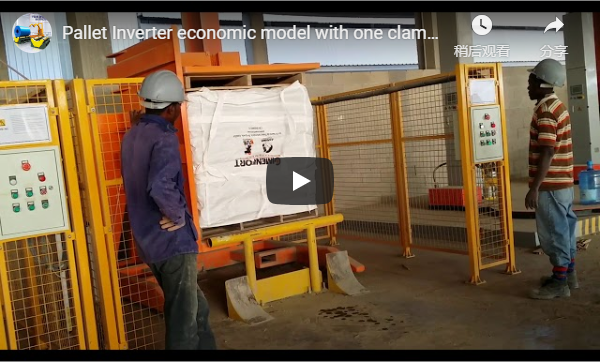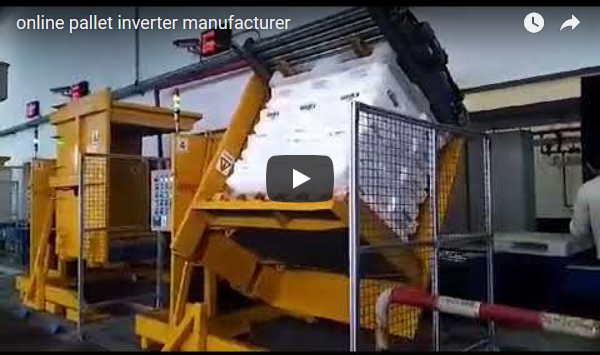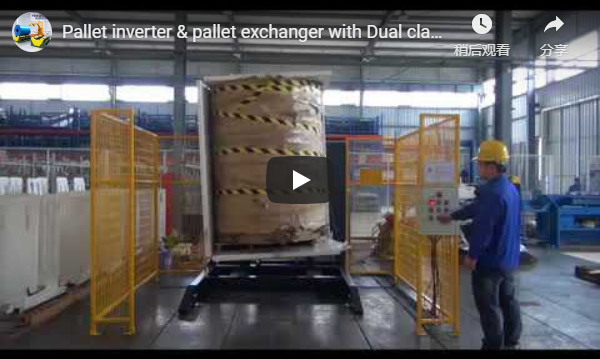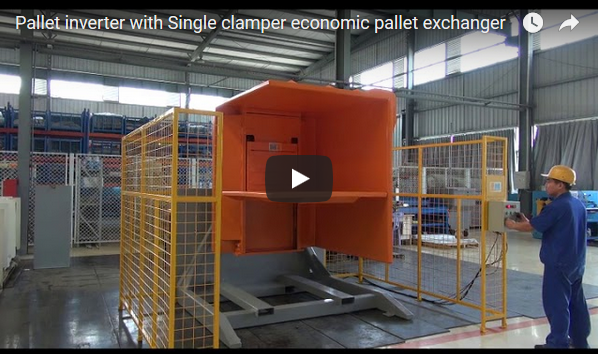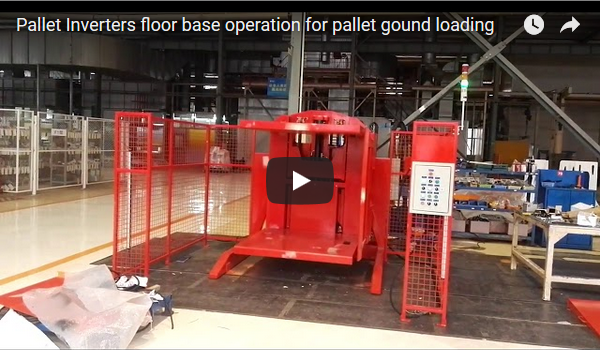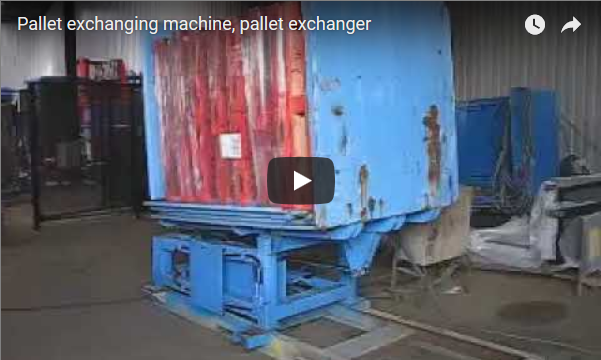Advanced 180° Pallet Inverter and Load Rotator Technology for Enhanced Material Handling
In today's demanding logistics, warehousing, and manufacturing environments, the efficiency and safety of material handling operations are paramount. The Fhopepack Mechanical 180° Pallet Inverter and Rotator stands as a robust solution engineered to streamline processes involving load inversion and rotation. This technology addresses critical operational needs, from pallet exchange to load conditioning, contributing significantly to productivity and workplace safety.
Addressing Core Material Handling Challenges
The need to invert or rotate palletized loads arises frequently in various industrial contexts. Common applications include:
- Pallet Exchange: Transferring goods from in-house or wooden pallets to shipping or plastic pallets (slip sheets) to meet specific hygiene standards (e.g., food, pharmaceuticals) or customer requirements.
- Damaged Pallet Replacement: Quickly and safely replacing broken or damaged pallets beneath a load without manual restacking.
- Product Rotation: Inverting loads for processing, storage access, or quality control (e.g., settling contents, accessing bottom layers).
- Load Squaring and Conditioning: Improving load stability before stretch wrapping or transportation.
Traditional manual methods for these tasks are often time-consuming, labor-intensive, and pose significant ergonomic risks. Automated solutions like the Fhopepack inverter provide a crucial advantage.
Technical Insights and Operational Principles
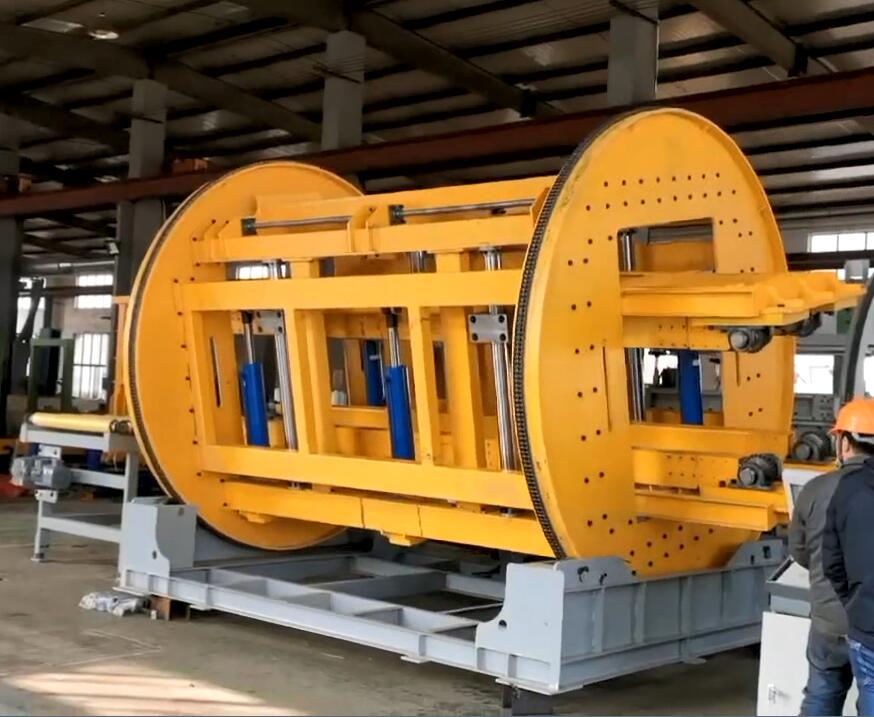
The Fhopepack 180° Pallet Inverter utilizes proven mechanical and hydraulic principles to achieve reliable and controlled load manipulation. Key design aspects often draw from established engineering practices and innovations in material handling automation, potentially referencing advancements documented in industry research and patents related to clamping mechanisms and rotational stability.
- Clamping System: Securely grips the load and pallet using adjustable pressure, often hydraulically or electro-mechanically actuated, accommodating various load sizes and weights within its specified range. Design considerations focus on preventing product damage while ensuring load stability throughout the rotation cycle.
- Rotation Mechanism: Employs a powerful drive system (typically hydraulic or heavy-duty electro-mechanical gears) to perform a smooth, controlled 180-degree rotation. The structural integrity is designed to handle significant torsional forces exerted by heavy or off-center loads.
- Control Interface: Modern units typically feature Programmable Logic Controllers (PLCs) with intuitive Human-Machine Interfaces (HMIs), allowing for easy operation, parameter adjustments (e.g., clamping pressure, rotation speed), and integration into automated workflows.
Key Features and Performance Parameters
While specific models may vary, typical features and specifications for industrial pallet inverters include:
- Load Capacity: Ranging from 1000 kg (2200 lbs) to over 2000 kg (4400 lbs).
- Rotation Angle: Full 180° rotation capabilities.
- Operation: Semi-automatic or fully automatic options available.
- Clamping Range: Adjustable jaws to accommodate different load heights and pallet dimensions.
- Cycle Time: Optimized for efficiency, often completing a full rotation cycle within 60 seconds.
- Construction: Heavy-duty steel construction for durability and longevity in industrial environments.
- Safety Features: Comprehensive safety measures including perimeter fencing, light curtains, pressure relief valves, secure clamping sensors, and emergency stop circuits, often designed in accordance with international safety standards (e.g., ISO 13849, OSHA guidelines).
Diverse Industrial Applications
The versatility of the 180° pallet inverter makes it valuable across numerous sectors:
- Food and Beverage: Essential for transferring goods to hygienic pallets before entering clean production areas or for export.
- Pharmaceuticals: Meets stringent GMP requirements for pallet exchange and load handling in controlled environments.
- Chemical Industry: Safely handling drums, bags, or containers that require rotation or pallet swapping.
- Printing and Paper: Inverting stacks of paper or printed materials.
- Logistics and Distribution Centers: Improving efficiency in cross-docking, order fulfillment, and managing returned goods.
- Manufacturing: Integrating into production lines for component orientation or finished goods handling.
Benefits of Implementation
Integrating a mechanical pallet inverter like the Fhopepack 180° model yields tangible benefits:
- Increased Efficiency: Drastically reduces the time and labor required for load inversion compared to manual methods.
- Enhanced Worker Safety: Eliminates hazardous manual lifting and restacking, significantly reducing the risk of musculoskeletal injuries.
- Product Protection: Gentle and secure clamping minimizes the risk of damage to goods during handling.
- Operational Flexibility: Enables quick adaptation to different pallet types and handling requirements.
- Cost Reduction: Lowers labor costs, reduces product damage claims, and minimizes operational downtime associated with manual handling.
Conclusion
The Fhopepack Mechanical 180° Pallet Inverter and Rotator is more than just machinery; it's a strategic investment in operational excellence. By automating a critical material handling task, businesses can achieve significant improvements in speed, safety, and cost-effectiveness, contributing to a more streamlined and productive supply chain. Its robust design and adherence to safety standards make it a reliable workhorse for demanding industrial applications.
For detailed specifications, customization options, or to discuss how this technology can integrate into your specific workflow, please visit the Fhopepack Pallet Inverter page or contact us directly.
https://www.fhopepack.com/pallet-inverter/
info@fhopepack.com

